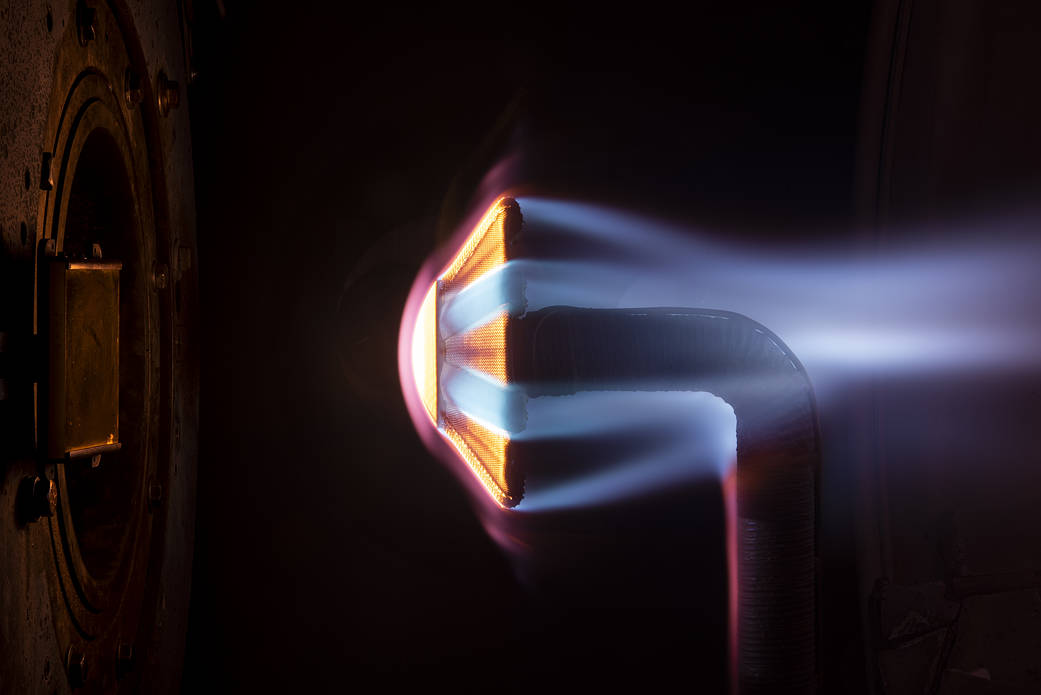The team behind the “umbrella-like” deployable heat shield design called ADEPT, or the Adaptable, Deployable, Entry and Placement Technology, is testing out a new material to deliver science payloads on future missions to Mars and beyond.
Called Spiderweave, the new woven fabric will make it safer for larger vehicles to safely pass through the atmosphere of more distant locations. It can also be packed up at launch and stored in a compact space. When sending science to other worlds, saving space and enabling safer atmospheric entries are top priorities. ADEPT could help achieve both of these goals.
Previous ADEPT heat shield iterations involved stitching together individual panels to comprise the heat shield. But engineers found that could often lead to points of increased stress and other discontinuities within the material. Spiderweave uses a new design architecture where materials are continuously woven into the heat shield’s fabric, avoiding these issues.
This summer, Spiderweave was put to the test in the arc jet facilities at NASA’s Ames Research Center in California’s Silicon Valley, where the ADEPT team observed how the material held up when exposed to temperatures above 3,000 degrees Fahrenheit. Those extreme temperatures mimic the conditions a vehicle experiences when entering a planetary atmosphere.
Building on the previous work of the ADEPT project, including a sounding rocket flight test in 2018, supported by NASA’s Flight Opportunities program, where the heat shield was deployed in space and safely returned to Earth, the Spiderweave material is making science possible on worlds both near and far.
ADEPT is funded by the Game Changing Development program within NASA’s Space Technology Mission Directorate, with support from the Flight Opportunities program. The textile company Bally Ribbon Mills developed the Spiderweave Material as a part of NASA’s Small Business Innovation Research program.
For news media:
Members of the news media interested in covering this topic should reach out to the NASA Ames newsroom.
Author: Frank Tavares, NASA’s Ames Research Center
Top image: The ADEPT Spiderweave material being tested in the arc jet facilities at NASA’s Ames Research Center in California’s Silicon Valley. Image credit: NASA/Patrick Viruel



























